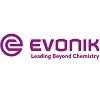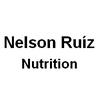
Content sponsored by:
Evonik Animal Nutrition
Harnessing NIR Technology to Improve Feed Ingredient Quality Control
Published: February 17, 2025
Related topics:
Mentioned in this news release:

Recommend
Comment
Share

7 de mayo de 2025
Excellent point Dr. Wen. In NRN, LLC experience Evonik NIR calibrations are accurate, particularly trypsin inhibitors in soybean meal. However, it is important to note that although reactive lysine may be an informative tool formulation is still based on digestible amino acids in monogastric nutrition. Ingredient digestible lysine coefficients are pivot for precise nutrition in commercial formulation. In that respect, specifically for soybean meal we delivered to the industry at the 2022 International Poultry Scientific Forum regression equations to estimate digestible lysine and arginine coefficients utilizing KOH protein solubility [Precise nutrition: Regression equations using KOH protein solubility to estimate digestible lysine and digestible arginine in commercial lots of soybean meal that have undergone the Maillard reaction. International Poultry Scientific Forum, Abstract M106, p. 34].
Of course, NIR is suitable for the 76 soybean meal samples used in the building of the regressions. Nelson Ruiz Nutrition, LLC, Suwanee, GA USA.
Of course, NIR is suitable for the 76 soybean meal samples used in the building of the regressions. Nelson Ruiz Nutrition, LLC, Suwanee, GA USA.
Recommend
Reply

7 de mayo de 2025
@Nelson Ruíz, thank you for your insightful comments. I agree with your perspective that KOH protein solubility serves as an effective indicator for assessing the degree of overheating in soybean meal. Our observations have shown a strong correlation between KOH solubility and the reactive lysine to total lysine ratio. Typically, we utilize both KOH and the reactive lysine ratio to validate our findings from NIR analysis.
Additionally, I would like to emphasize that the reactive lysine to total lysine ratio may be a more suitable indicator for other ingredients where KOH is less applicable, such as DDGS, corn and MBM. This is why we continue to find reactive lysine to be a valuable indicator, as it directly reflects the loss of available lysine due to heat damage.
Additionally, I would like to emphasize that the reactive lysine to total lysine ratio may be a more suitable indicator for other ingredients where KOH is less applicable, such as DDGS, corn and MBM. This is why we continue to find reactive lysine to be a valuable indicator, as it directly reflects the loss of available lysine due to heat damage.
Recommend
Reply

7 de mayo de 2025
Dr Ruiz, could you please share the equation and the abstract?
M.abdollahi@massey.ac.nz
Thank you
M.abdollahi@massey.ac.nz
Thank you
Recommend
Reply


Evonik’s Analytical Services
Evonik’s analytical services is a powerful tool for analysing raw material evaluation and feed ingredients.
Suggested link
1

Would you like to discuss another topic? Create a new post to engage with experts in the community.




.jpg&w=3840&q=75)


